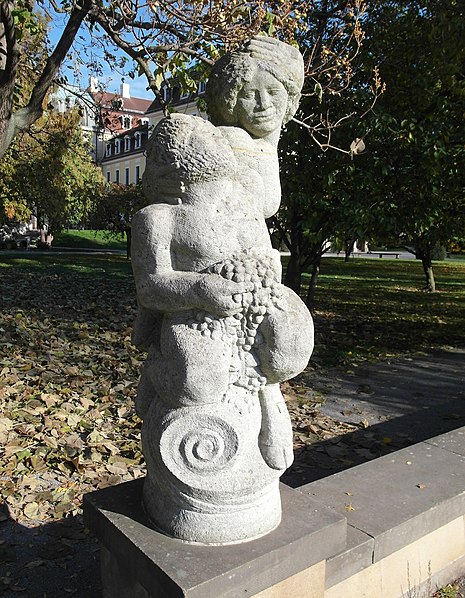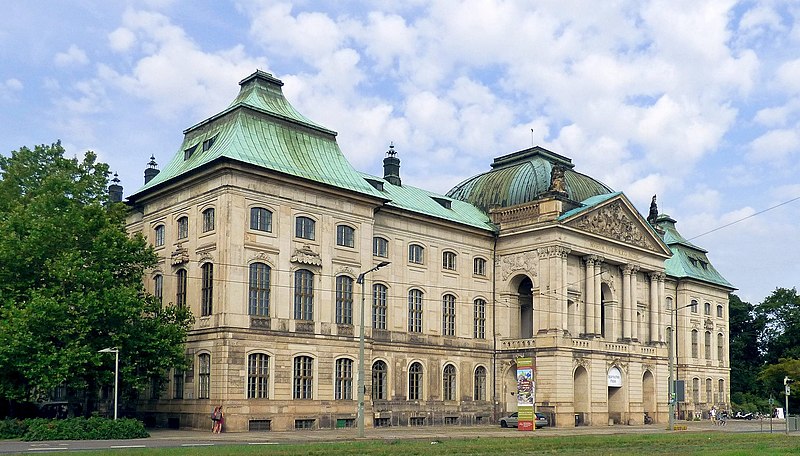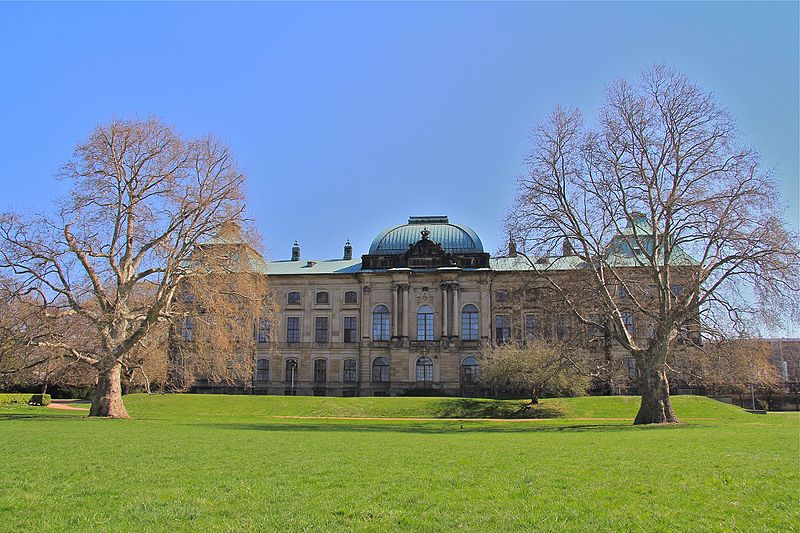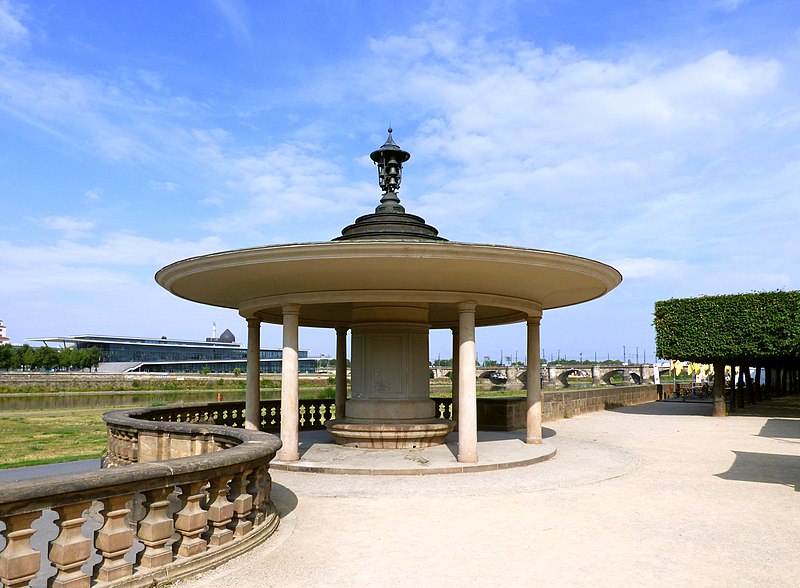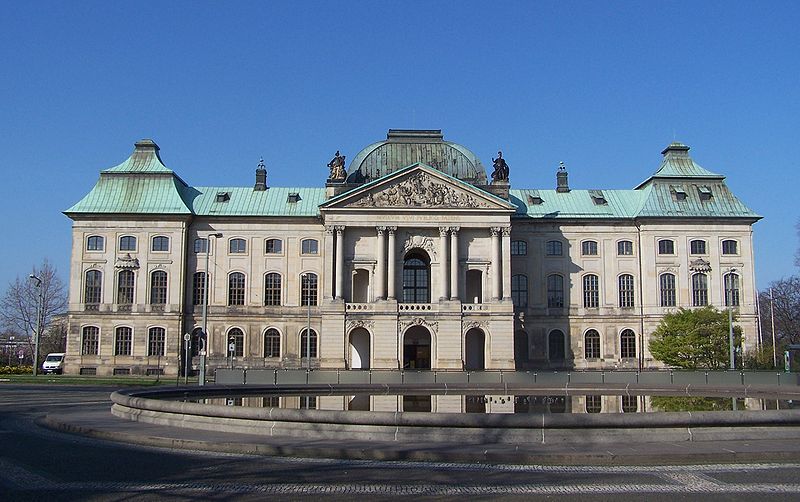Japanisches Palais, Dresden
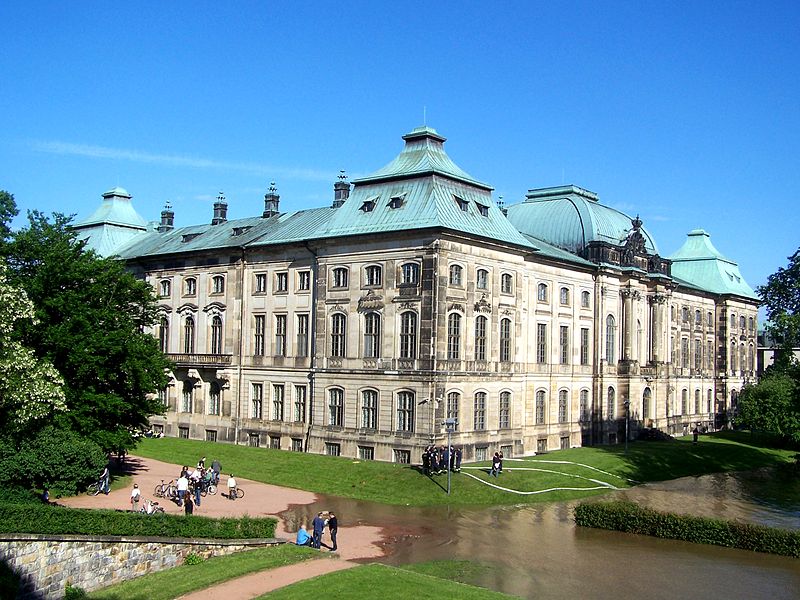
Facts and practical information
Nestled on the banks of the Elbe River in Dresden, Germany, the Japanisches Palais, or Japanese Palace, is a grand architectural masterpiece that embodies the Baroque splendor of the 18th century. This historic palace, originally intended for the display of an exquisite porcelain collection, is a testament to the opulence and cultural curiosity of its time.
The Japanisches Palais was commissioned by Augustus the Strong, Elector of Saxony and King of Poland, who was an avid collector of fine porcelain. The palace's name, which translates to "Japanese Palace," was inspired by Augustus's initial plans to house his extensive collection of East Asian porcelain, one of the largest in Europe. Though the building's design does not reflect Japanese architecture, the name has endured through the centuries.
The palace's construction began in 1715, under the supervision of architect Pöppelmann, but it was later redesigned by Zacharias Longuelune to augment its grandeur. The final result is an imposing three-winged structure adorned with sculptures and elaborate decorations that speak volumes about the wealth and taste of its commissioner.
Over the years, the Japanisches Palais has served various purposes. It has been a library, a museum, and even a repository for ethnographic and prehistoric collections. Today, it is home to three of Dresden's most significant museums: the Museum of Ethnology Dresden, the State Museum for Prehistory, and the Senckenberg Natural History Collections Dresden. These institutions offer visitors a glimpse into diverse worlds of human culture, history, and nature.
The palace's exterior is as impressive as the treasures it contains. The façade is characterized by a series of statues and friezes that depict various mythological scenes, while the grand staircase in the interior is a highlight for architecture aficionados.
Visitors to Dresden should not miss the opportunity to explore the Japanisches Palais. It stands not only as a repository of cultural artifacts but also as a monument to the city's resilience and restoration, having been meticulously rebuilt after the destruction of World War II.
Grosse Meissner StrasseNeustadt (Innere Neustadt)Dresden
Japanisches Palais – popular in the area (distance from the attraction)
Nearby attractions include: Gemäldegalerie Alte Meister, Mathematisch-Physikalischer Salon, Semperoper, Galerie Neue Meister.
Frequently Asked Questions (FAQ)
When is Japanisches Palais open?
- Monday closed
- Tuesday 10 am - 6 pm
- Wednesday 10 am - 6 pm
- Thursday 10 am - 6 pm
- Friday 10 am - 6 pm
- Saturday 10 am - 6 pm
- Sunday 10 am - 6 pm
Which popular attractions are close to Japanisches Palais?
How to get to Japanisches Palais by public transport?
Tram
- Palaisplatz • Lines: 4, 9 (2 min walk)
- Neustädter Markt • Lines: 4, 8, 9 (5 min walk)
Bus
- Albertplatz • Lines: +261 (10 min walk)
- Flixbus station • Lines: 060 (12 min walk)
Train
- Dresden-Neustadt (12 min walk)
- Dresden Mitte (17 min walk)


